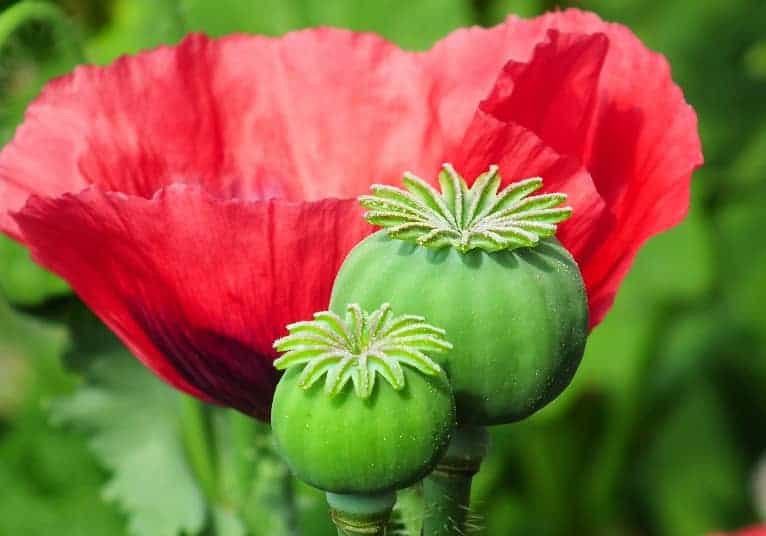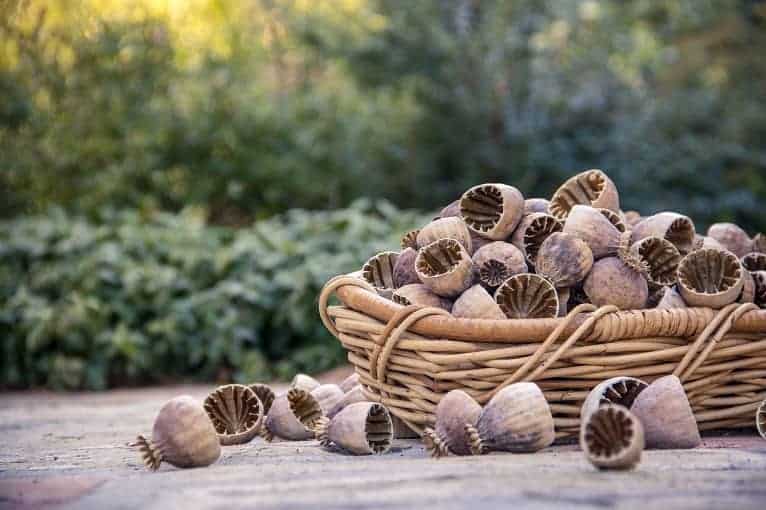The flowering period for poppies varies by species and the climate you live in. However, we recommend you to deadhead the poppies right after their petals drop.
The longer you wait before you remove the spent flower, the longer the poppies energy goes into developing new seeds for the next season. If you want to minimize the time it takes to cut the poppies deadhead off, we recommend you use either a hedge trimmer or a sharing tool.
This will speed up the process and you will minimize the energy the plant will be using on new seeds.
It’s only necessary to deadhead the poppies if you want to keep them from spreading in your garden. However, if you’re happy with the total numbers of flowers your poppies produce season after season it’s for sure not necessary to deadhead the poppies.
Remember some varieties will give new life to your garden with their attractive colors and appearance, while others can become weedy.

Will poppies grow in shade?
It’s not a problem for poppies to grow in shade, but it’s not recommended.
Poppies can grow in either a partially shaded position or directly in the sun in your garden and we will always recommend the poppies to be directly in the sun.
It’s not recommended and worth your time to sow poppies in the shade because these wildflowers require a lot of sun to grow well. They can as written before growing in shade, but it’s strongly recommended to try to find a more sunny location in your garden since the more sin the more the poppies thrive.
However, even if you get success in getting your poppy to grow in shade, you will often miss out on the bright blossoms, because the poppy will close tight when it’s grown in shade.
This will also happen in even cloudy weather and it’s therefore strongly not recommended to plant your poppies in shade, but instead find a location with more sun.
If you really want to only grow poppies and only have a garden that offers shade, we will recommend you to try out the Celandine poppy, because it grows in both partial and full shade.
Save your poppy seeds for next year
Poppies in a garden offer a sea of different colors and are easy to get to grow year after year. But how do you preserve poppy heads and even save some poppy seeds for next year?
You have to wait before the poppy flowers wither and the plant forms a seed pot, which you cut off with either using a small pruning shear once the seed pod turns into light brown color.
After the seed pod turns into a light brown color you will have to place the poppy see pods in a warm room with low humidity. Spread the poppy seed pods on a newspaper and let the seeds dry for 1 to 2 weeks. You know the seeds are dry once you hear them rattle when you shake the newspaper the sees has been dried in.
You can cut a hole on the top of each seed pod easily by using a knife or even pull the pods apart. Pour the black tiny sees into a large bowl.
Afterward, we recommend you sort through the bowl to remove any plant material, which is not a seed like small pieces of the pod as an example.
When you have removed any other plant material from the seeds, you can pour the seed into a glass jar or any other glasses, but the glass has to have a tight-fitting lid.
It’s a great idea to use a marker on the glass you have chosen to store your seeds in and put a label on it with the name of the seeds and the year you harvested the seed. When the seeds have been stored, place the glass jar in a cold, dark, and dry room like a basement or in a shed. A lot of sees remain viable for 1-2 years.
What do you do with poppy seed heads?

If you leave the poppy seed heads on the plant after flowering, it will often seed itself in the coming years.
Do poppies come back year after year?
It usually takes around 3 to 4 months for a poppy plant to start growing and produce flowers. You will often see it blooms last from 1 to 2 weeks in your garden.
You can expect that annual poppies will bloom once before they wither and come back the next year again. However, some species like perennial poppies can bloom more than once per year. You will be able to see perennial bloom in the spring or early in summer after their first growing season.
If you cut oriental poppies back to encourage green foliage growth you will be able to see them bloom next season again. Therefore, poppies are definitely one of the flowers that are easiest to care for and beautiful to wear and that can easily grow year after year in your garden.
The colorful blooms of the poppy flower will surely make your day better. However, if you consider giving poppies a try for your next garden project, we will definitely recommend it. Choose between white, red, or pink poppy flowers will welcome you into a great spring.
Should you cut back poppies after they bloom?
If you want to get back your poppies to bloom next year, we recommend you cut back the deadhead poppies after flowering. When you cut down the poppies back to their ground level it will stimulate the growth of fresh new foliage and often some new flowers. However, fertilizer will help to support the poppies’ growth.
Tip: You can always pull out the plant from the root of the poppies if you want to thin your garden from the colorful flowers.
When your poppies have been in place for a few years, you might notice that some of the plants can have some new leaves above the base of the poppies when you prune them. You can expect that these new plants may rebloom throughout the summer, however, the color of the new plants may be a paler shade than the first bloom of the poppies.
You have to remember that if you wait too long to harvest the seed pods, they might explode on their own and scatter seeds in your garden bed and lawn. This can quickly mean that the following spring, you will experience poppies as weeds everywhere in every corner of your garden.
5 easy steps to plant your poppy seeds
We recommend you sow your poppy seeds directly into your garden a few weeks before you expect the last frost in the spring:
1) Pick the site. Poppies can handle shade, partial sun, and full sun. To reach the best results, try picking a planting site with a minimum of 6 hours of daily full sun.
2) Prepare the bed soil. Poppies grow best in soil rich in organic matter but can handle poor infertile soil, but it’s not recommended if you want to get the best result of your poppy seed.
3) Sow the seeds. To germinate the poppy seeds prefer access to either partial or full sunlight, so try don’t bury the seeds beneath the soil. Therefore, sow the poppy seeds by sprinkling them across the bed soil and afterward sprinkle a light layer of soil on top of the poppy seeds.
4) Watering. You have to keep the soil moist to get your seeds to grow and germinate to be able to see the colorful blooms.
5) Thin seedlings. A thing a lot of people miss is to thin your seedlings. When your seedlings start to grow and are around 1-2 inches tall, we recommend you to take your garden shears and thin the seedlings back. The seedlings should be between 6 and 12 inches apart to minimize competition.
Do you know how to heat up a greenhouse during winter – read more here!
